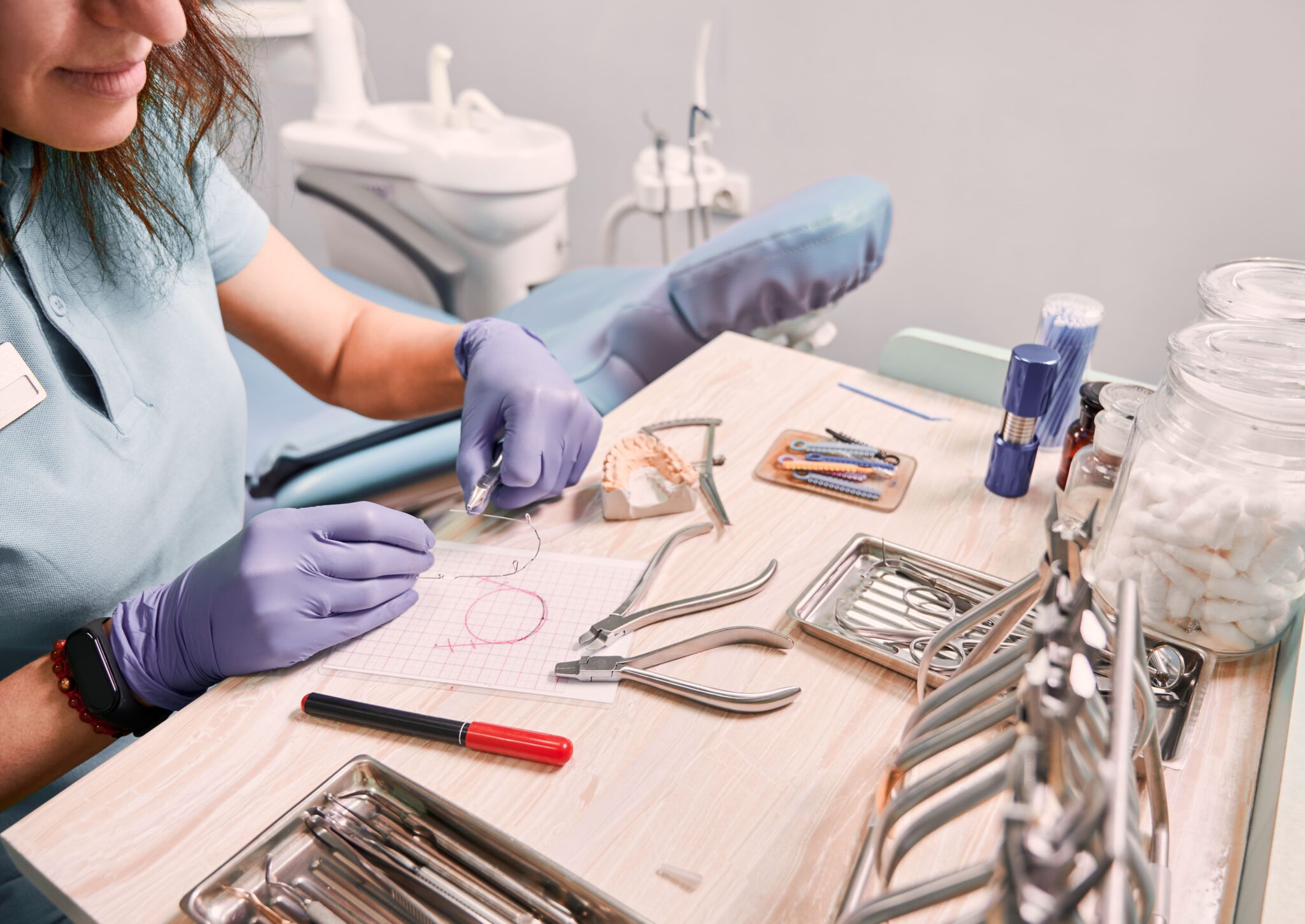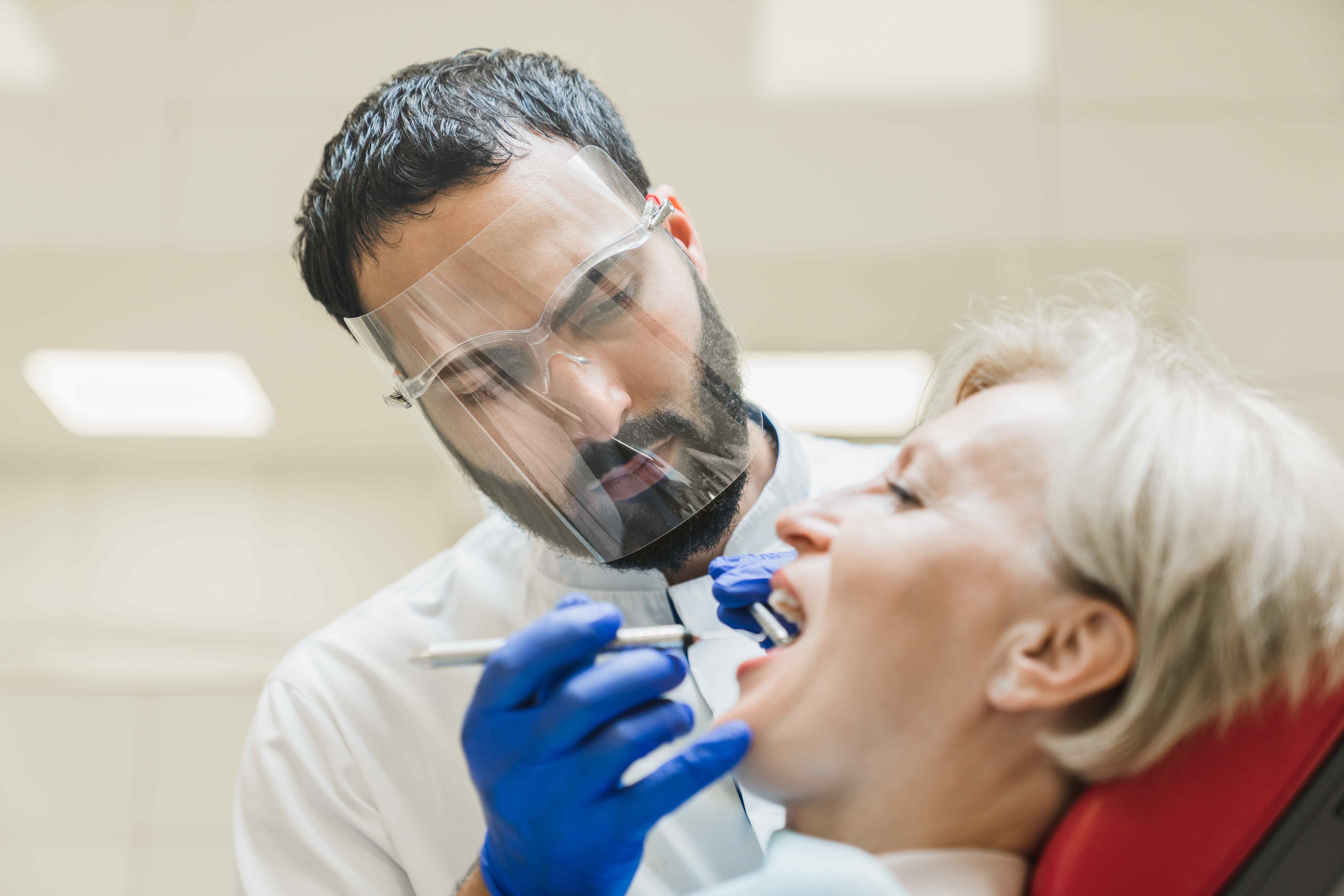Maintaining healthy gums involves more than just brushing, flossing, and regular dental visits. Increasing evidence…

Advances in Dentistry: A Closer Look at New Tools and Techniques
In the pursuit of oral health, we constantly encounter novel dental technology and breakthroughs. From the use of artificial intelligence to improved imaging and sedation methods, contemporary dentistry innovations are altering our perceptions of dental health.
The Dawn of Artificial Intelligence in Dentistry
The incorporation of Artificial Intelligence (AI) into dentistry signifies a pivotal shift in this field, empowering it with cutting-edge capabilities. AI has become an invaluable asset for achieving precise and early diagnoses of dental issues, which could otherwise escape detection through a naked-eye examination.
Highly advanced AI-driven tools are at the forefront of this revolution, equipped to conduct detailed examinations of dental radiographs to spot a myriad of problems like tooth decay, gum diseases, and more. Far from just being proficient, these tools deliver results with unprecedented accuracy. Recent studies underscore the enormous potential of AI to detect serious conditions like oral cancer significantly sooner than traditional methods, thereby enabling immediate medical intervention.
The transformative effect of AI, however, is not confined to clinical applications. It also simplifies administrative functions, from scheduling appointments and coordinating patient follow-ups to expediting insurance claims processing. These enhancements not only boost operational efficiency but also elevate the patient experience.
Clearly, AI’s integration into dentistry marks a paradigm shift, presenting a novel fusion of technology with diagnostics and administration. This metamorphosis underscores the significant impact of technology on improving healthcare outcomes and patient experience. Moving ahead, AI’s prominence in dentistry is predicted to further increase, thus cultivating an atmosphere of accuracy, productivity, and elevated oral health.
Smart Technology for Better Oral Hygiene at Home
The advances of modern dental technology are no longer restricted to dental offices. Instead, they’ve integrated seamlessly into our homes, revolutionizing the way we care for our oral hygiene daily. The traditional practices of brushing and flossing have received an innovative makeover through smart technology, ensuring the effective cleaning of our teeth and gums.
For instance, consider the emergence of smart toothbrushes. These sophisticated devices come embedded with sensors and Bluetooth features. They offer invaluable real-time feedback on your brushing habits, letting you know if you’re exerting excessive pressure or neglecting certain areas. They also evaluate the duration of your brushing activities and send alerts when the brush head requires replacement.
Yet, the influence of smart technology doesn’t stop with brushing. It’s also radically reshaping the way we floss. Smart water flossers have entered the marketplace as a high-tech counterpart to traditional flossing methods. They function by emitting a pulsating water stream in-between teeth and along the gumline, proving more effective in removing food residues and plaque. The intelligence of these flossers lies in their capacity to sync with your smartphone, helping you monitor your flossing habits. With time, these devices utilize this data to offer you tailored recommendations for improving your oral hygiene.
Essentially, these innovative devices function like personal dental hygienists stationed right in your bathroom, leading you towards improved oral hygiene. By incorporating these dentistry advancements into your daily regimen, you’re not only taking control of your oral health but also focusing on preventive care. With continuous technological evolution, it’s exciting to envision the future possibilities of at-home oral care.
The Evolution of Sedation Techniques
Gone are the days when dental visits were synonymous with discomfort and anxiety. Today, new dental technology is transforming the patient experience, particularly when it comes to dental sedation. A wave of innovations has made dental procedures much more manageable for those who have significant anxiety or fear associated with dental treatment.
Intravenous (IV) sedation, for instance, is a relatively new sedation method that has been embraced in the dental community. IV sedation provides a deep level of relaxation and comfort for patients, making it ideal for those with intense dental phobia. It’s more controlled and offers immediate effects, putting patients in a state of deep relaxation while still being conscious and able to respond to directions. This is a substantial advancement in ensuring patients with severe dental anxiety can receive necessary dental care.
Another significant leap in this field is the development of computer-controlled local anesthesia. This technique revolutionizes the process of anesthetic delivery by making it virtually painless. An automated system administers the local anesthetic in a slow and steady manner, reducing the discomfort often associated with the sudden influx of the anesthetic solution. This advancement allows the procedure to begin once the area is adequately numbed, significantly enhancing the patient’s comfort during dental treatments.
Such advancements in dental sedation are clear demonstrations of how technology is improving patient comfort and experiences. These innovative methods are not only reducing dental anxieties but also encouraging more people to regularly attend dental visits, thereby promoting better oral health. As the field of dentistry continues to evolve, we can look forward to even more sophisticated and comfortable sedation techniques in the future.
The Use of 3D Imaging in Dentistry
Dentistry has been revolutionized through the adoption of 3D dental imaging technology. This innovative tool enables practitioners to obtain and scrutinize complete, 3D visualizations of teeth, oral tissues, and bones. Such thorough insights present a degree of precision and detail surpassing what traditional X-rays offer.
Let’s take Cone Beam Computed Tomography (CBCT) as an instance. This particular imaging technology provides a 3D view of a patient’s oral structure, turning it into an irreplaceable asset for planning complex procedures such as orthodontics, root canal treatment, and implant placements. These detailed depictions allow dentists to devise their methods with high precision, enhancing accuracy in diagnoses, better planning, and ultimately, more successful treatment outcomes.
Another example of 3D technology in dentistry is the 3D scanner. It helps in creating an exact digital replica of the patient’s oral framework. By doing so, they remove the discomfort and hassle often related to traditional dental molding. The result, a high-definition digital model, enables a more tailored and efficient approach to dental care. This includes creating custom dental appliances like braces and retainers.
In summary, 3D dental imaging has significantly elevated the standard of care within dentistry. These advanced imaging tools enable dental professionals to offer more detailed, custom-made, and efficient diagnosis and treatment, improving overall patient care. The unique feature of 3D imaging in dentistry is its capability to reveal what was previously unseen, setting the stage for a future where oral health management is both more effective and comfortable. The impact of this pioneering dental technology on oral health is transformational indeed.
Embracing the New Dental Technology
The domain of dental care has embraced the whirlwind of technological advancements. Noteworthy developments, like artificial intelligence (AI), smart technology, 3D imaging, and modern sedation methods, reflect how this sphere is progressing. These state-of-the-art tools, however, are not merely about technological breakthroughs. They primarily aim to enhance patient comfort, refine outcomes, and facilitate supreme oral health.
For patients, staying updated on these innovative strides is crucial. This knowledge can significantly transform your dental care experience, making it more seamless and comfortable. Comprehending these upgrades fosters productive dialogues with dental practitioners and empowers patients to make well-informed decisions about their oral health.
The application of these advancements ranges from the convenience of smart toothbrushes that monitor daily oral hygiene to the assurance of precise diagnosis provided by 3D imaging. Additionally, modern sedation techniques offer tranquility, particularly for individuals experiencing dental anxieties, making dental consultations less intimidating.
Visualizing the future of dental care is a fascinating exploration into the realm of possibilities. However, amidst these advancements, one constant remains: the unwavering commitment of dental professionals towards harnessing technology for enhancing patient care. Each new instrument, technique or innovation signifies a progressive stride towards efficient, effective, and pleasant dental treatments.


